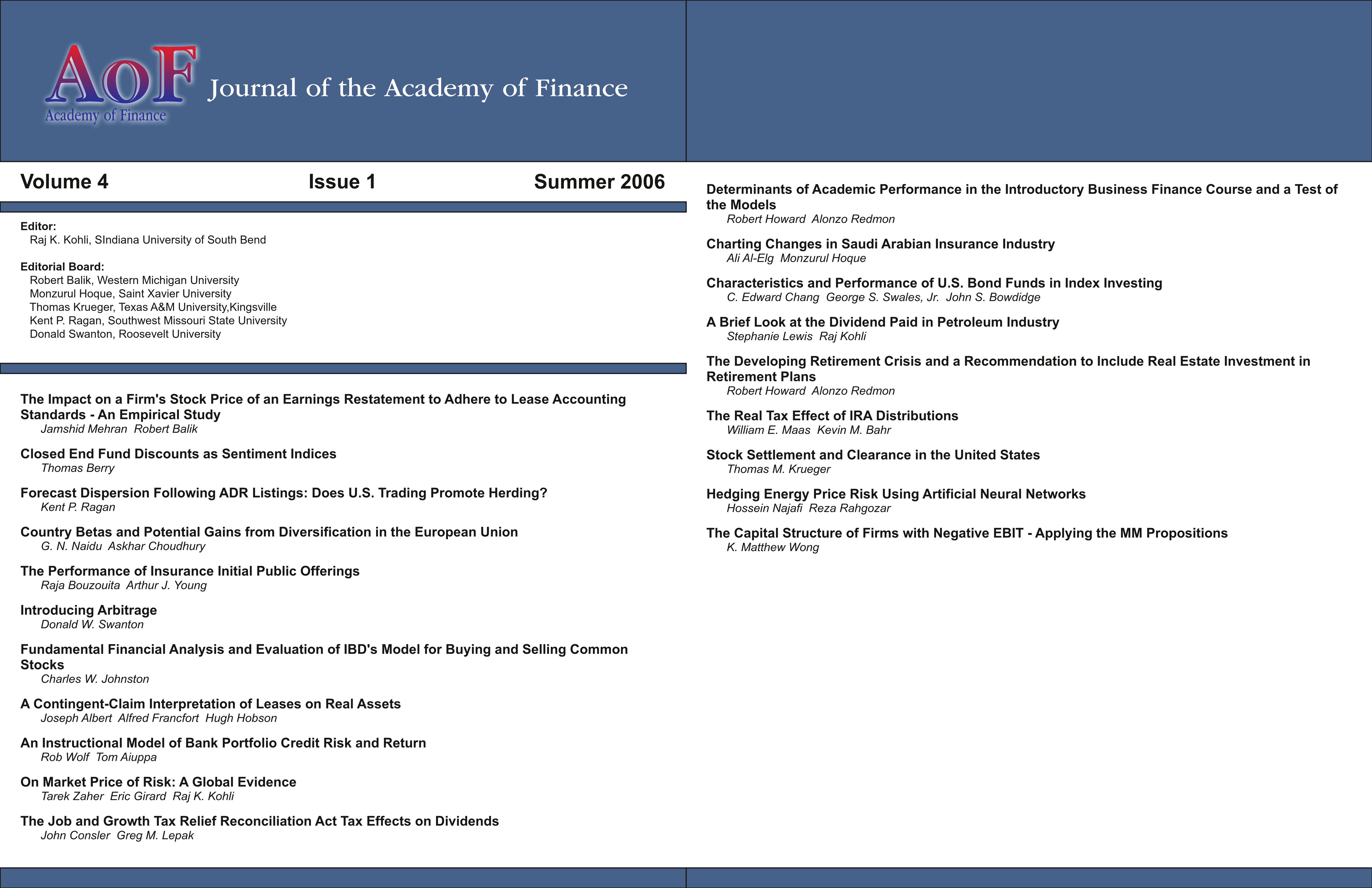Characteristics and Performance of U.S. Bond Funds in Index Investing
DOI:
https://doi.org/10.58886/jfi.v4i1.2466Abstract
This abstract was created post-production by the JFI Editorial Board.
A well-diversified portfolio should contain bonds. This study has identified all bond index funds and ETFs currently available as avenues to diversify portfolios. The authors of this study find the "almost" index funds identified by Ferri (2002) tum out to be gems: they have low expense ratios and the lowest turnover, while exhibiting mostly the lowest risk and highest riskadjusted returns. Pure index funds, with low expense ratios and turnover, have performed well in the past ten years based on Morningstar's ratings, but below average in the past three years. Enhanced index funds have the highest expense ratios, extremely high turnover, average or high risk and always the lowest risk-adjusted returns. As newcomers, bond ETFs have the lowest expense ratios and comparable returns, but they underperformed "almost" and pure index funds in the areas of turnover, risks and risk-adjusted returns.





